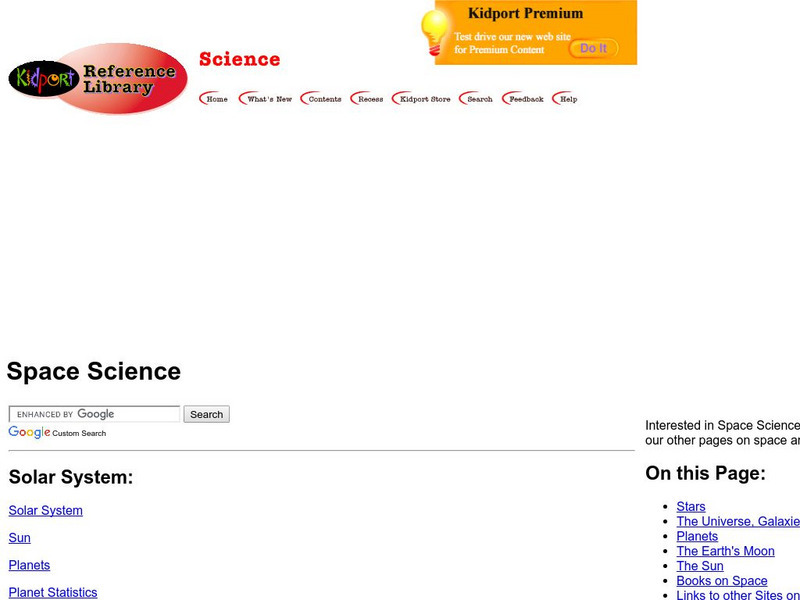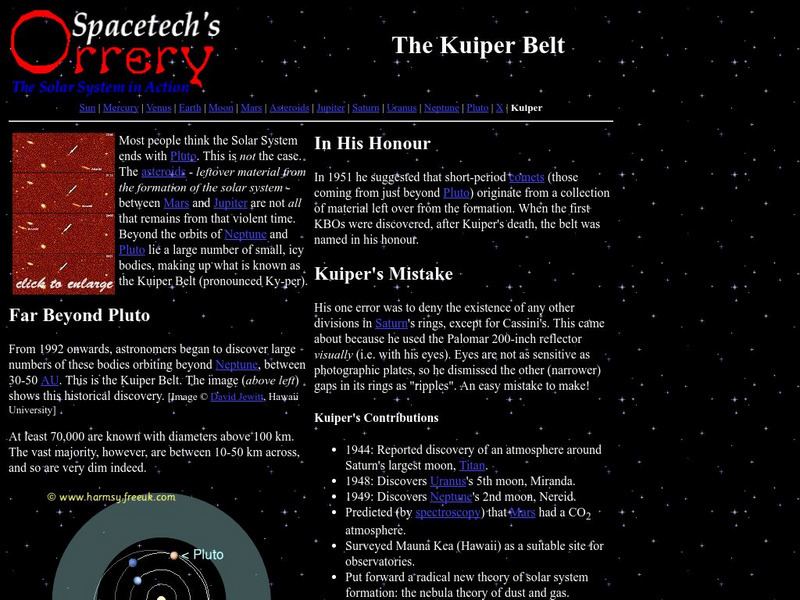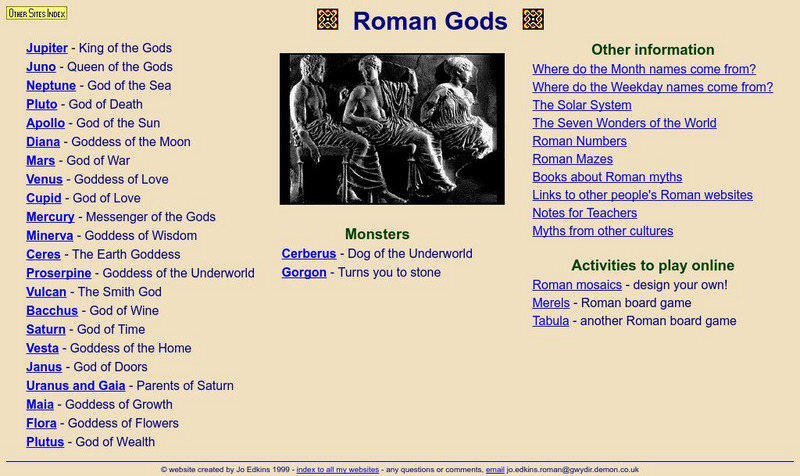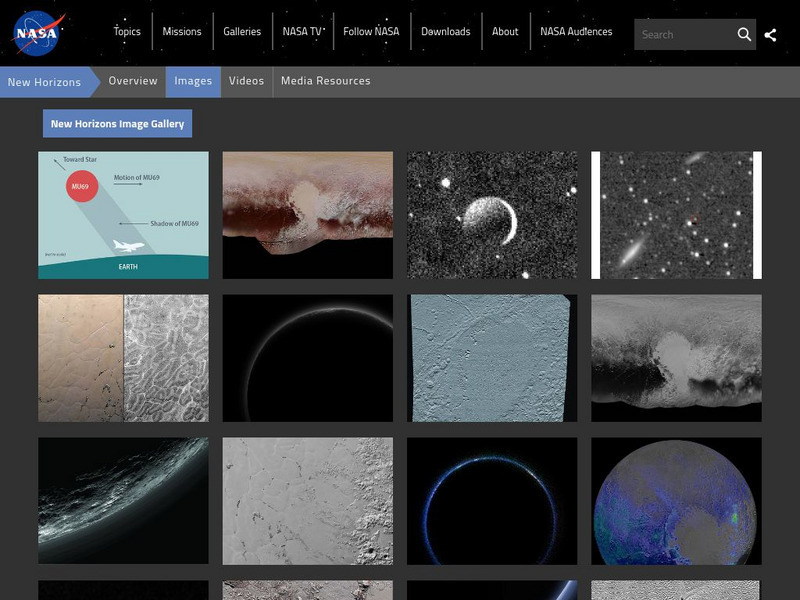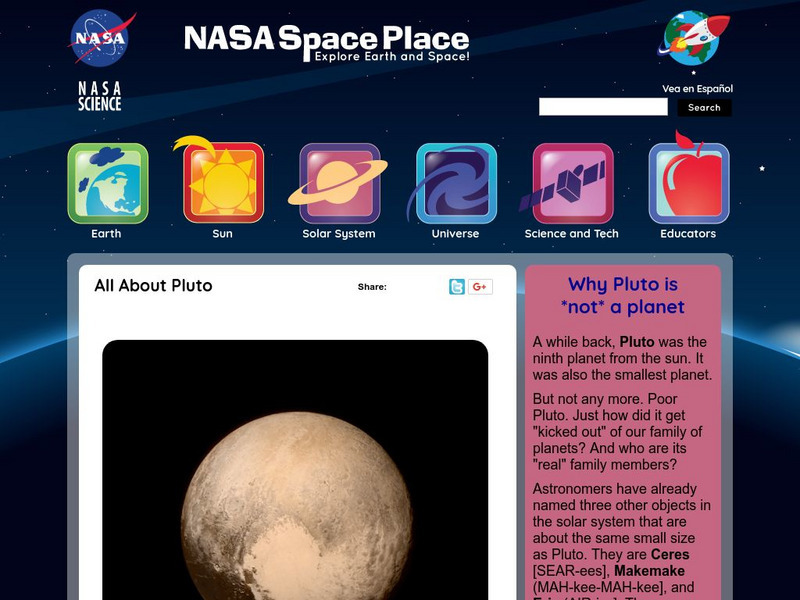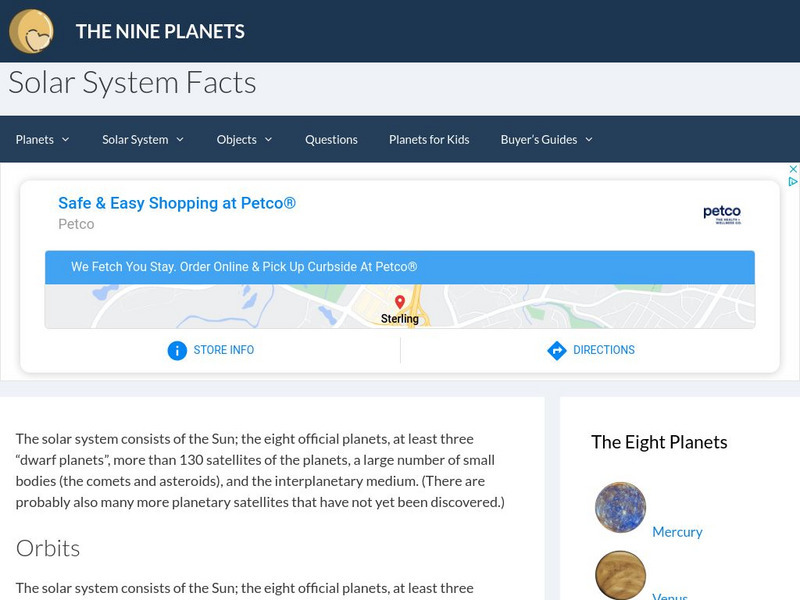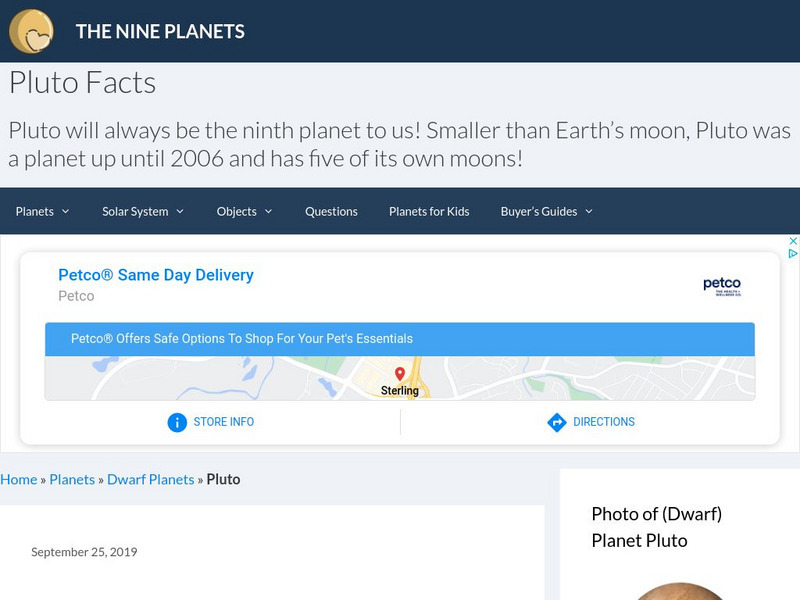Kidport
Kidport: Space Science
This complete resource will help students to improve their understand of space exploration. Includes images of the universe, galaxies, stars and planets.
Other
University of Cambridge: Astro Adventure
Imagine a time when you can travel through space, planet to planet, cheaply and in comfort, when you can take a trip to the stars as your next holiday. Well, imagine no more. Learn more about the solar system as you take this trip of a...
Other
Spacetech's Orrery: The Kuiper Belt
This site provides a historical look at the Kuiper Belt; its theoretical prediction, finding, and the man behind it all - Gerald Kuiper.
Other
Southwest Research Institute: Distant Ek Os Kuiper Belt Electronic Newsletter
Distant EKOs is a scholarly newsletter about astronomical research on the Kuiper Belt. The bulk of information is accessed by clicking on the Current and Past Issues links. The newsletter issues contain, primarily, abstracts of scholarly...
Other
Canal Kids: Ciencias (Science for Portuguese Speakers)
Colorful, engagingly written information about astronomy and biology for Portuguese-speaking English language learners. Both subjects are broken down into a broad array of related subtopics. The biology section is particularly helpful...
Other
Roman Gods
This is an awesome site to research Roman gods. Find out about these Roman icons. This site lists each of the gods and then by clicking on the name you get more in depth information.
NASA
Nasa: Mission Science: What Is a Planet?
Find out about how planets have been classified historically, and what scientists use to study them.
NASA
Nasa: New Horizons Image Gallery
A collection of still and moving images from the New Horizon's space mission. Most of the images include descriptions and depict Pluto and its moon, Charon.
Washington State University
Washington State University: Ask Dr. Universe: Is Pluto a Planet Again or Not?
Dr. Universe answers this question after talking with WSU's Katie Cooper. Katie is an expert in the geology of Earth and objects in outer space.
NASA
Nasa: The Space Place: Hail King of the Ice Dwarfs
This resource provides a nice overview of Pluto. Get information on Pluto's size, tilt, orbit and surface features. There is also a brief explanation of the "New Horizons" space probe.
NASA
Nasa's the Space Place: King of the Ice Dwarfs
An information page all about Pluto! Learn about Pluto's size, path around the sun, temperature, location, and traveling partner Charon.
NASA
Nasa: Planets in a Bottle
In this simple lesson, students grow yeast to learn how the climates on each of the nine planets would affect life.
Famous Scientists
Famous Scientists: Clyde Tombaugh
Find out about Clyde Tombaugh, the scientist who discovered the dwarf planet Pluto in 1930, and also discovered a number of asteroids.
Famous Scientists
Famous Scientists: Michael E. Brown
This article discusses the life and scientific discoveries of Michael E. Brown. Learn how he is credited with downgrading Pluto from a planet to dwarf planet.
TeachEngineering
Teach Engineering: The Outer Planets
Students explore the outermost planets of our solar system: Saturn, Uranus and Neptune. They also learn about characteristics of Pluto and its interactions with Neptune. Students learn a little about the history of space travel as well...
NASA
Nasa Space Science Data Archive: Pluto
This site, which is provided by the National Space Science Data Center of NASA, is a site with detailed information about Pluto, including planned missions to explore the planet in greater detail.
NASA
Nasa: Space Place: Messenger: Planet Mass Comparison
Compare the masses of planets in this interactive animation. Simply pile a number of Earths on one side of the scale, to balance with the mass of one Jupiter. Then try this with all the planets.
Nine Planets
The Nine Planets: An Overview of the Solar System
A detailed overview of the history, mythology, and current scientific knowledge of each of the planets and moons in the solar system.
Read Works
Read Works: Mission Pluto
[Free Registration/Login Required] An informational text about Pluto being classified as a dwarf planet. A question sheet is available to help students build skills in reading comprehension.
Nine Planets
The Nine Planets: Pluto
This site contains copious information about Pluto. The site contains descriptive and statistical information, as well as a detailed article about the search for trans-Plutonian planets and the "Nemesis" hypothesis.
Nine Planets
The Nine Planets: Comets
A detailed description of comets, their distinct parts, and the known comets in our solar system. Links are also provided for additional information on related subjects.
A&E Television
History.com: The Space Race: Interactive Universe
A virtual journey through space offers photos and facts about Earth and its neighboring planets, comets, other celestial bodies of the Solar System, and the Milky Way and Andromeda galaxies.
NASA
Nasa Star Child: Star Child
StarChild from NASA defines and describes the Solar System in a simple and easy-to-understand manner. The website is broken down into two versions for the student, grade school and junior high.
Other
The Apollo Society: The Solar System
Contains a small set of images of solar system objects and a series of links to information about all solar system objects. Solar System Tours link to excellent image collections.


